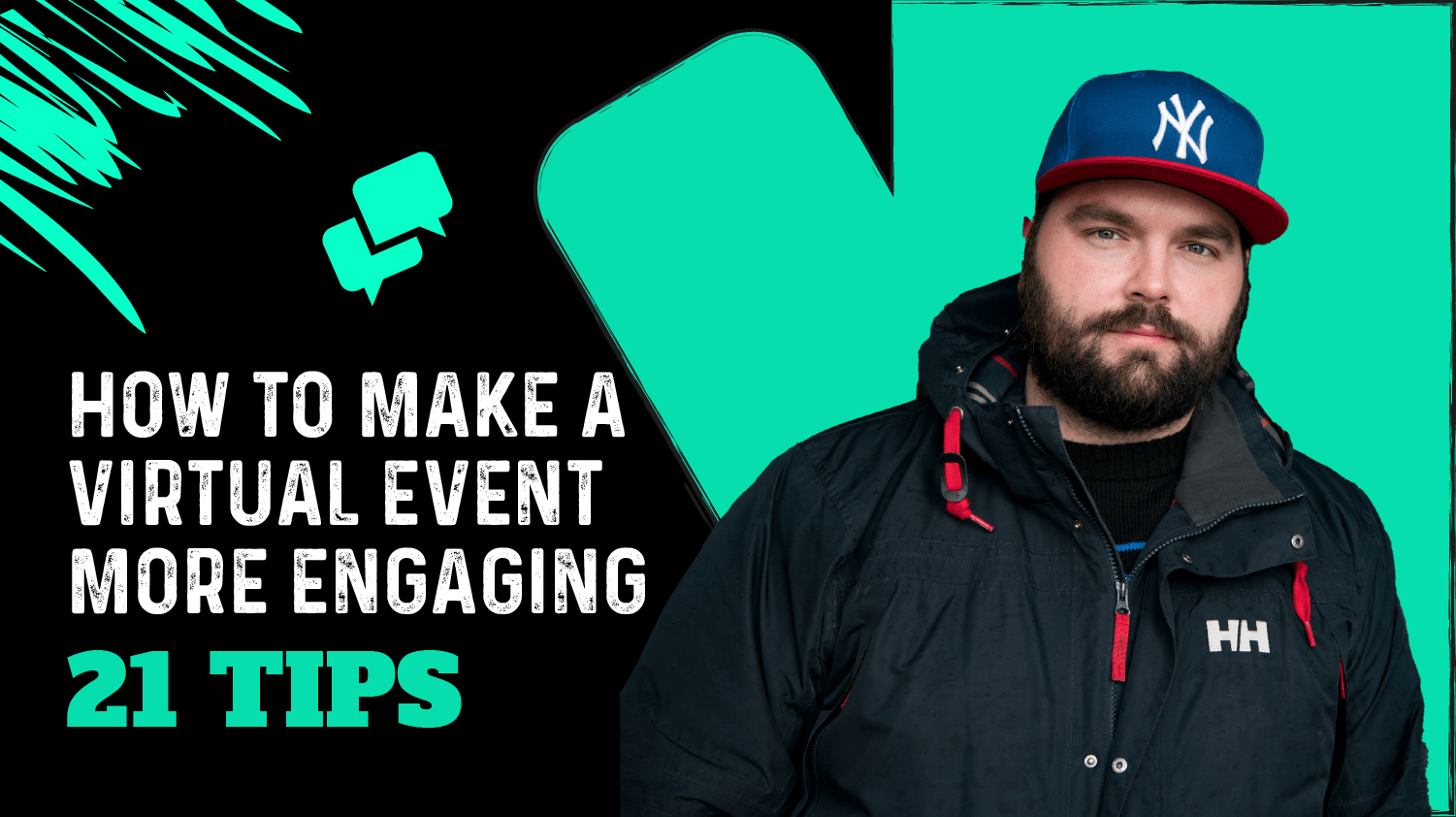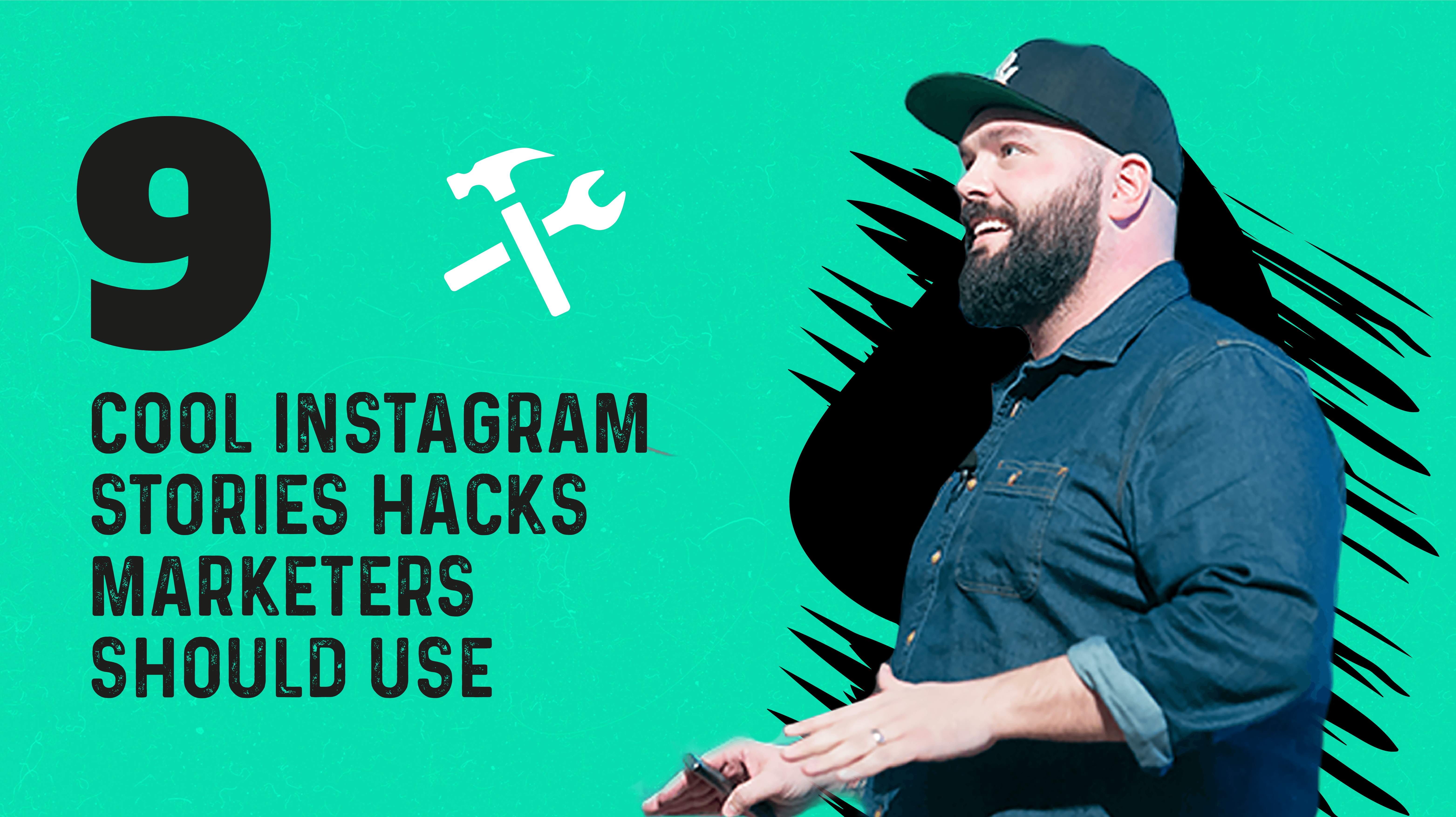

Like it or not, virtual events are here to stay.
Sure, everyone is eager to do stuff in person and attend events. That won’t change.
But virtual events offer a ton of benefits too:
Unsurprisingly, the virtual events market is booming. Research expects it to grow by nearly 24% by 2027.
Virtual events also pose a few extra challenges, specifically with engagement. Let’s be honest, most virtual events are a snoozefest.
Today we’ll cover a handful of tips and strategies on how to make a virtual event more engaging.
There’s one big reason so many hosts have problems creating engaging virtual event activities and ideas: They treat virtual events like in-person events… but online.
We can’t force people to change their behaviour. We can only control how we adapt and respond to their behaviour.

People interact differently online. Virtual events demand different types of communication and stimulation. Just transferring your event plans to the internet won’t work.
Instead, consider how your audience behaves online and consumes content if you want to figure out how to make a virtual event engaging.
Before adding a bunch of shiny features to your event, evaluate the session length.
Attendees tuning in from home have other sh*t to do: work, kids, homeschooling, errands, etc. They don’t have time to sit and stare at their laptop for four hours.
Spread the event out over more days and keep the sessions limited to two hours, depending on the event.
Plain black-and-white text on PowerPoint slides just won’t cut it. Virtual event activities need engaging content. Bright colours, GIFs, infographics, creative branding – this is the stuff that holds interest.
Polls show attendees that you care about their interests and experience during the event. Use polls to let attendees select interview questions, forum topics, workshop virtual event activities, and more.
During the event, use polls to gauge reactions and thoughts. Post-event, use them to follow up with attendees and form content to keep engagement flowing.
Virtual events can feel daunting to attendees.
Am I expected to talk? Will my mic and camera be on? Can I ask questions? Will people shout over me?
If someone has too many questions and no answers, they just won’t attend.
Creating a comprehensive FAQ for the event lets everyone know what to expect and how to conduct themselves. Don’t forget to let people know what behaviour is appropriate and what’s not.
Just like with in-person events, virtual events should include some casual socialising. We all crave human interaction but it’s a lot harder to find these days. Happy hours and afterparties give people a chance to just enjoy each other’s presence.
Your attendees might be spread out across the continent – or even the globe. Even people within your time zone might not be able to attend at the scheduled time.
That’s the beauty of virtual events: People don’t have to attend at the same time. On-demand capabilities let people watch and participate when they please.
Virtual events make it easy to include pre-recorded discussions without sacrificing the vibe which often happens with in-person events and Skype calls/videos.
I still recommend keeping the keynote speakers live to help engage the audience. Questions and comments just aren’t the same from pre-recorded stuff.
Wondering how to make a virtual event more engaging? Ask people to engage! Send out push notifications at strategic points during the event asking people to share their thoughts with the event’s custom hashtags.
Who doesn’t love free stuff? Well, it’s not technically free if you paid for the event, but it’s still nice to get stuff in the mail.
Don’t neglect the swag just because you’re hosting a virtual event. People know when you’re trying to cut corners.
You can also include branding from the event’s sponsors.
Gamification instantly increases engagement by 48%. Assign attendees points every time they ask a question, interact with a participant, or tweet with the hashtag. Hand out prizes to the most engaged attendees.
If the event must run for more than two hours, make sure to schedule plenty of breaks. During the break, you could keep people engaged with easy drink recipes, stretching, music, or fun facts about your industry. People are more likely to stick around for the whole thing if they have breaks to get up and stretch their legs a bit.
Don’t be afraid to experiment a bit. Caricature artists, musical performances, video games – entertainment in between sessions or in special viewing rooms outside the main event can boost engagement and keep attendees hooked.
Workshops are important. People attend events because they want to learn from experts and network with colleagues.
Keep workshops relevant yet diverse enough to appeal to different attendees’ interests. Ask workshop leaders to create hands-on virtual event activities for each workshop so everyone can feel like they learned something or were a part of something bigger.
Quizzes and tests might not work for every type of event, but in topics like education and industry webinars, they’re smart for keeping people engaged. Try to gamify the quizzes so everyone feels compelled to pay attention and earn points with correct quiz answers.
Since we’re spreading the event out over several days, themes are useful – and fun – for keeping people engaged. For example, if we’re hosting a music event, we might stick with a specific genre for each day. This also helps attendees decide which days to prioritise as some people might not have time to attend every day.
Interactive stuff like animated reactions, speech bubbles for chats, polls, click-to-tweet features, and more demand engagement. In fact, interactive content can multiply engagement x2 over. And once people start clicking, their chances of clicking and interacting again go up.
Give attendees a chance to score one-on-one interviews with keynote speakers or artists. Consider holding a raffle for one-on-one interviews and waiting until the end of the event to announce the winners. People will stick around to see if they’ve won.
Every event needs a branded hashtag. There’s no way around it. Use the event’s special hashtag to organise a contest. Who can tweet the most original content? Who had the best theme outfit? Who had the best questions?
Not everyone will have the resources to create a dedicated app. If you do, however, go for it. Use the app to help attendees navigate the different event rooms, submit questions, sign up for workshops, share their contact details for networking – the sky’s really the limit here.
Plus, apps can keep people engaged long after the event ends. Just make sure the app serves some kind of purpose beyond the event. Use it for future events, sharing industry content, special tools, and whatever your audience will find useful.
It’s easy to assume that large events are where it’s at for engagement. But as any smart marketer knows, more traffic isn’t necessarily better. Smaller guest lists let you organise highly targeted events. It’s much easier to create relevant event topics for 20 people compared to 100.
Global audiences pose some challenges when it comes to organising real-time events. No one wants to listen to discussions at 3 AM. Plenty of people might not want to watch on-demand either if they can’t submit questions in the moment.
Consider your target audience when creating events. If an international audience is the goal, think about breaking up the event into two repeat events so attendees in each time zone get a chance to tune in at a comfortable time.
It’s all about your audience. Attendees in some fields could be prepared to sit down for an hour-long talk while they multitask on another screen. Others need bitesize sessions and ongoing interactivity.
Figure out what formats and tactics work best with your segments and industry.
If you don’t get it right the first time, don’t give up. Learn from your mistakes and do something different next time.

You can reach larger audiences around the globe. You can replay sessions and speeches on-demand. People can attend while multitasking,

Are you taking full advantage of Instagram Stories yet? Of course not. That’s why you’re here to learn about cool
Copyright © 2023 Chris Kubby. All Rights Reserved.
Website by WP ServiceDesk | Website maintained by Social Media Agency Kubbco
